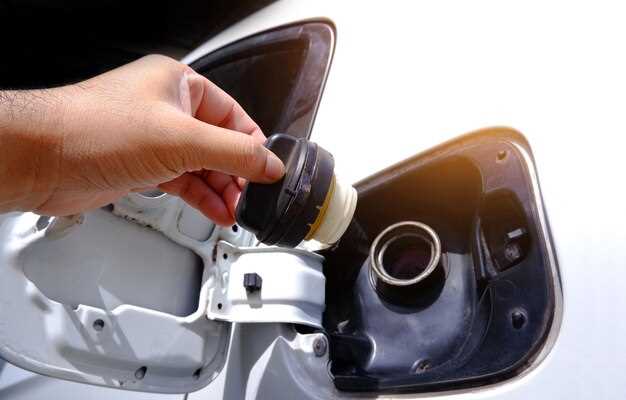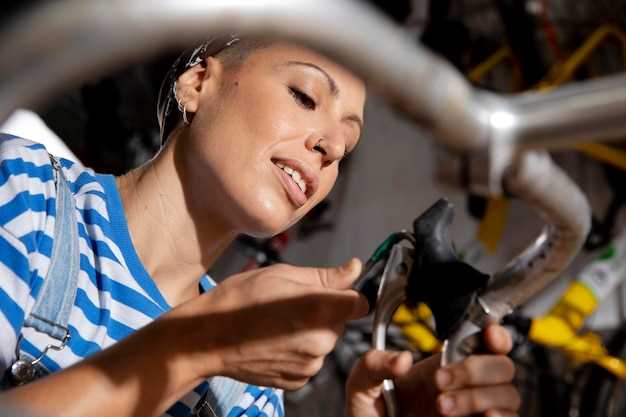
How to clean your fuel injectors at home
- Dominique Kaye
- 0
- Posted on

Maintaining the efficiency of your vehicle’s engine is crucial for optimal performance and fuel economy. One key component that often gets overlooked is the fuel injector. Over time, fuel injectors can become clogged with carbon deposits and other impurities, leading to poor engine performance, increased emissions, and even decreased fuel efficiency. Regular cleaning of your fuel injectors can help mitigate these issues and ensure that your vehicle runs smoothly.
While professional cleaning services are available, many car owners may prefer to tackle this task at home. Fortunately, there are several effective home methods for cleaning your fuel injectors that require minimal tools and expertise. By following these steps, you can restore the proper function of your fuel system, saving both time and money in the long run.
In this article, we will explore various DIY methods to clean your fuel injectors efficiently. From using special cleaning solutions to simple household items, you will discover practical ways to enhance your engine’s performance and prolong the life of your vehicle. With a little effort and the right approach, cleaning your fuel injectors can be a straightforward and rewarding task.
Choosing the Right Cleaning Solution for Fuel Injector Maintenance
When it comes to maintaining the efficiency of your vehicle’s fuel system, selecting the appropriate cleaning solution for your injectors is crucial. The right product can enhance performance, improve fuel economy, and prolong the life of your engine components.
Firstly, consider the compatibility of the cleaning solution with your specific type of fuel injector. There are various formulations available, including those designed for gasoline and diesel engines. Always check the label to ensure the product is suitable for your injector type.
Another important factor is the formulation itself. Solutions that contain detergents, such as polyether amine (PEA), are often highly effective in dissolving carbon deposits and improving flow rates in fuel injectors. Look for products that specify their cleaning capabilities, emphasizing features like “strong deposit removal” or “fuel system cleaner.”
Additionally, consider the method of application. Some cleaning solutions are intended to be mixed with fuel, while others may require direct application or use with a cleaning kit. For more effective cleaning, solutions that allow for direct injector treatment often yield better results, as they concentrate the cleaning agents, targeting the build-up more effectively.
Be mindful of any potential side effects, such as damage to seals and gaskets. Some aggressive cleaners might be too harsh for older fuel systems. Reading user reviews can provide insights into the safety and efficacy of a particular product.
Ultimately, regularly maintaining your fuel injectors with a proper cleaning solution not only enhances your vehicle’s performance but also saves on costly repairs down the line. Choose wisely and ensure that your chosen solution aligns with your engine’s needs for optimal results.
Step-by-Step Guide to Using Cleaning Kits at Home

Cleaning your fuel injectors at home can be an effective way to enhance your vehicle’s performance. Using a cleaning kit is a practical approach to ensure your fuel system remains in optimal condition. Follow this step-by-step guide for a straightforward procedure.
Step 1: Gather the Necessary Tools
Before starting, collect all required items. You will need a fuel injector cleaning kit, which typically includes a cleaner solution, adapters, and a pressurized canister. Additionally, have a wrench, a container for old fuel, and safety goggles ready.
Step 2: Find the Injector Location
Identify where the fuel injectors are located in your engine. Consult your vehicle’s manual for guidance. This will usually involve removing the engine cover for easier access.
Step 3: Prepare the Vehicle
Start by ensuring your vehicle is off and cooled down. Disconnect the negative battery terminal to prevent any electrical issues during the cleaning process. Additionally, relieve the fuel system pressure by removing the fuel cap and locating the fuel pressure relief valve.
Step 4: Disconnect the Fuel Injectors
Carefully disconnect the fuel injector connectors and the fuel lines using the appropriate tools. Make sure to place a container underneath to catch any residual fuel that may spill out. Take note of the configuration to reassemble them correctly later.
Step 5: Attach the Cleaning Kit
Follow the instructions provided with your cleaning kit to attach the cleaning solution canister. Use the appropriate adapters for your fuel injectors to ensure a tight seal and prevent leaks during the cleaning process.
Step 6: Inject the Cleaning Solution
Once everything is securely connected, activate the cleaning kit according to the manufacturer’s instructions. This typically involves either turning a valve or pressing a button to allow the cleaner to flow through the fuel injectors. Monitor the process to ensure that the solution is being injected properly.
Step 7: Let the Cleaner Soak
Allow the cleaning solution to sit in the injectors for the recommended time specified in the cleaning kit. This soaking period helps break down any carbon build-up and deposits, improving overall injector function.
Step 8: Flush the Fuel System
After the soaking time has passed, flush the fuel system with clean fuel to remove any residual cleaning solution. This may require reconnecting the fuel supply and turning the ignition to let fresh fuel flow through the injectors.
Step 9: Reassemble Everything
Carefully reconnect the fuel injectors and their respective connectors. Ensure all connections are tight to prevent any fuel leaks. Once everything is reassembled, replace the engine cover if it was removed.
Step 10: Final Checks and Test Drive
Reconnect the negative battery terminal and start your vehicle. Check for any leaks or unusual noises. Once everything is functioning correctly, take your vehicle for a test drive to observe improvements in performance. Regular cleaning of your fuel system can contribute to the longevity and efficiency of your engine.
Signs Your Fuel Injectors Need Immediate Attention

Fuel injectors play a crucial role in the performance of your vehicle. Recognizing the signs that indicate a problem with your injectors can prevent further damage and maintain optimal engine performance. Here are some key signs to watch for.
One major indicator is unusual engine performance. If you experience difficulties during acceleration or find that your vehicle hesitates when you press the gas pedal, it may signal that your fuel injectors are clogged or malfunctioning. Smooth fuel flow is essential for responsive engine performance.
Another clear sign is a decrease in fuel efficiency. If your vehicle is consuming more fuel than usual without a clear reason, such as increased driving frequency or changes in route, the issue might lie with your injectors. Poor fuel atomization can lead to excessive fuel usage and decreased engine power.
Additionally, pay attention to engine misfires or rough idling. If your engine is stuttering or running inconsistently, it could indicate that one or more fuel injectors are failing to deliver the proper amount of fuel to the combustion chamber. This disruption can create imbalances in the engine’s performance.
Be aware of any unusual noises coming from the engine bay. If you hear a clicking or sputtering sound, it might suggest that your injectors are not functioning correctly. Malfunctioning fuel injectors can produce a range of noise levels due to improper fuel delivery.
Lastly, observe any visible leaks or fuel odors around your vehicle. If you notice a distinct smell of gasoline or see fuel pooling under your car, you experience a serious issue that demands immediate professional attention. Fuel leaks are not only dangerous but can also affect your injectors and overall engine health.
In summary, monitoring these signs can help you determine when your fuel injectors require urgent care. Addressing injector problems early can save you time, money, and future hassle.
